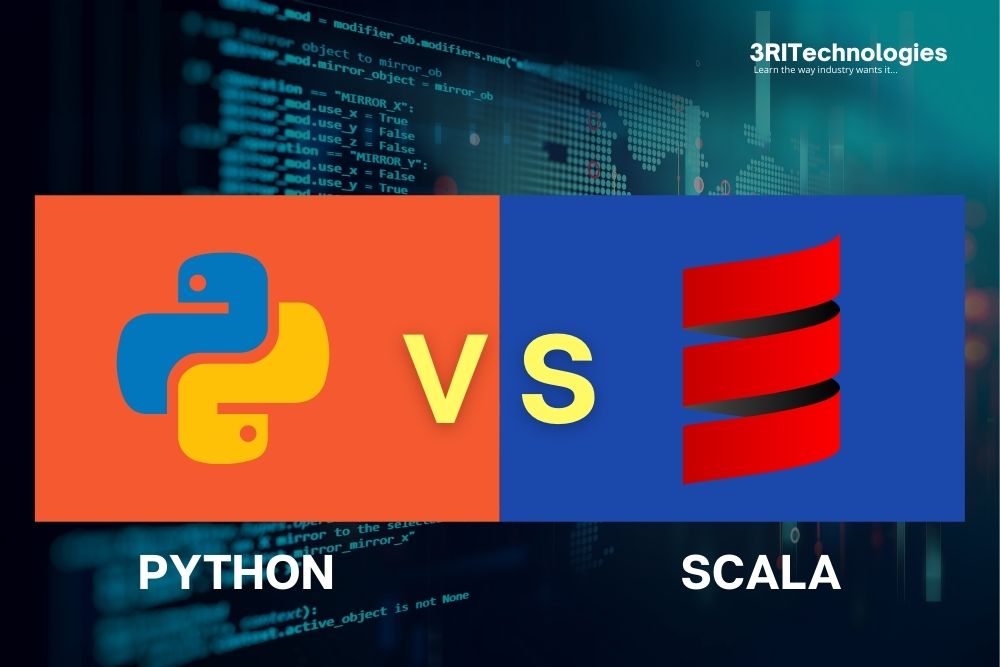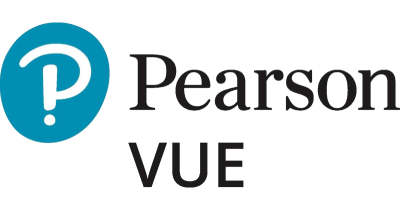Difference between Python and Scala
Python and Scala are exceptionally popular in the Data Science and Analytics field and with good reason. Python and Scala are both great tools for a variety of programming and data science tasks. In addition, Python and Scala provide exceptional agility and adaptability in various contexts, from small-scale projects to large machine learning applications.
When selecting a programming language for data-intensive applications or general-purpose development, the Python vs Scala discussion frequently arises. Both are powerful languages, but they cater to different strengths and project requirements. Understanding the nuances of Scala vs Python, including what is Scala used for – especially in big data processing with frameworks like Apache Spark – and considering if Scala is better than Python for specific tasks, is vital for developers and project managers. Making the right choice can significantly impact project efficiency and outcomes. For those looking to build a strong foundation in versatile and widely-used languages, our Python Training in Pune offers comprehensive learning. This article will delve into a detailed comparison to help you navigate the choice between these two prominent languages.
Python and Scala have major distinctions, while both of these programming languages are excellent for creating cutting-edge applications with cutting-edge technology.
Performance Showdown: Analyzing Python vs Scala Speeds
Python is a dynamic programming language that is high-level, all-purpose, and user-friendly. It’s simple to learn and executes a code in fewer lines. Python is pre-loaded with a large number of libraries, modules, and other capabilities. It is a well-known programming language.
This language is preferred among programmers due to its simplicity, large quantity of libraries, and built-in modules. It’s a very appealing language for rapid application development, and Python is utilized in various fields, including web development, machine learning, and artificial intelligence. It’s all about object-oriented programming.
Want to Upskill to get ahead in your career? Check out the Python Training in Pune.
The Python Advantages
Increased productivity
Python is a highly productive language. The simplicity of Python enables developers to focus only on the work at hand.
Languages Interpreted
Python is an interpreted language, meaning that each line of code is executed directly by Python. It stops further execution in the event of an error and returns the cause of the problem. Python displays a single error regardless of how many faults the program has.
Open-Source and free
Python is available under an open-source license that the OSI has authorized. It enables its use and distribution to be completely free.
You may take the source code and tweak it to create your version of Python. It is advantageous for companies who wish to alter a certain behavior and then utilize their modified version for development purposes.
Support to vast libraries
Python’s standard library is enormous; it contains nearly all of the functions need to complete your assignment. As a result, you are no longer reliant on third-party libraries.
Python’s drawbacks
In nature, this language is frequently slow while running. Compared to C, Java, or C++, which are statically typed languages, Python is a dynamically typed language, which occasionally causes the computer to run slower than expected.

Scala – What is it?
Scala is a “scalable language” and a high-ranking computer language for general-purpose programming. It is a hybrid method of programming that incorporates both functional and object-oriented techniques. It works on the Java Virtual Machine and is compatible with all Java programs and libraries.
Scala code is more error-free, concise, and readable than those of other languages. It makes authoring, compiling, executing, and debugging applications straightforward. In addition, Scala’s source code is written so that a Java compiler can interpret it.
Its static types assist the programmer in avoiding bugs in complicated programs. In addition, JavaScript and the Java Virtual Machine enable us to create high-performance systems that are easily accessible to a vast ecosystem of libraries. Learn at 3RI Technologies.
The Scala Advantages
Scala supports the majority of JVM libraries, allowing it to be deeply entrenched in corporate programs. It also has numerous understandable syntactic characteristics with popular languages such as Ruby.
It includes functions into class declarations and provides numerous functional features like string comparison improvements and pattern matching.
Scala’s disadvantages
Due to the mixture of functional and object-oriented characteristics of this language, the type-information might occasionally be challenging to comprehend.
The community of developers for this language is relatively small.
Check out Python Training in Noida.
Python vs. Scala: The Main Differences
Nowadays, due to the technological advancement in the IT industry, many programming languages have been introduced. Out of all the programming languages existing in this programming world, today we are going to explore two prominent and renowned programming languages: Python and Scala.
Both Python and Scala programming languages are popular and globally acknowledged for their broad applications. Python is popular among developers or tech-savvy people because of its simplicity, versatility, and powerful applications. On the other hand, Scala embraces a functional programming paradigm and stands out for its robustness and efficiency, especially in developing scalable applications.
Now, without wasting much time, let’s move ahead with their basic introduction and check which programming language is best fit for you to learn Python or Scala on six different parameters.
Python: Python is a dynamically typed programming language created by Guido van Rossum. He made Python available globally on February 20, 1991. Nowadays, the Python programming language is widely used in AI (artificial intelligence), data science, analytics, ML (machine learning), etc. Many newbies who want to learn programming languages make Python their first choice, all because of its easy English syntax.
Scala, on the other hand, is a statically typed multi-paradigm programming language developed by Martin Odersky in 2001 at EPFL. The prime feature of the Scala programming language is that it supports both object-oriented programming and functional programming. It is much easier to learn and is based on the world’s oldest programming language, Java.
Python vs. Scala: The Main Differences
- Platform
Python is a versatile programming language that runs on various platforms, like Windows, Linux, macOS, UNIX, Android, iOS, etc. Python code can be run in web browsers using frameworks like Brython or through online interpreters.
Scala, known for its efficiency and strong concurrency model, provides a robust platform for building scalable and high-performance applications. It is operational on all platforms that are compatible with JVM (Java virtual machines).
- Integration
Python is integrated with web servers like Apache and Nginx and supports integration with SQL databases such as MySQL, PostgreSQL, etc. It also integrates with frameworks like Django, Flask, and Pyramid for web applications and APIs.
Scala directly uses Java libraries and frameworks, allowing seamless integration with Java-based tools. It integrates with Apache Hadoop for data processing on bulk data sets.
- Features
Scala specializes in concurrent operation, functional programming, and powerful static typing, while Python is recognized for its accessibility and adaptability. Furthermore, Python cannot interact with Hadoop smoothly compared to Scala.
- Usability
Python is primarily known for its easy-to-understand English syntax, which makes it suitable for newbies. Scala, despite its abilities, has an extensive learning curve due to its complex syntax.
- Code restoration and safety
Python offers strong support for code readability, prioritizing ease of understanding. Scala points out type security and functional programming, allowing it to prevent runtime challenges.
- Testing
Python being a dynamically typed programming language, its testing process and methodologies can be quite complex. Whereas the testing process in Scala is easy, it provides robust testing capabilities and is suited for concurrent codebases.
Python vs. Scala: The Critical Distinction
The following sections detail the critical difference between Scala and Python:
For Data Science and Machine Learning
Python is most popular language among data scientists due to its ease of learning and implementation and its extensive library and framework ecosystem. Python contains many helpful libraries for data science and machine learning applications, including SciPy, NumPy, Matplolib, and Pandas, while providing libraries for more complex deep learning applications, like Keras, Pytorch, and TensorFlow.
On the other hand, Apache Spark is one of the primary reasons to learn Scala for machine learning. Scala may use in combination with Apache Spark to manage massive amounts of data, commonly referred to as Big Data.
Curve of learning
Python and Scala both employ functional and object-oriented paradigms, which results in a fairly similar syntax. Despite this, Scala may be a little difficult for novices to grasp due to the abundance of high-level functional features. On the other hand, Python benefits from straightforward logic and a robust library ecosystem, making it the best choice for novices.
Performance
Scala is around ten times quicker than Python in terms of speed. Its dependency enhances Scala’s runtime performance on the Java Virtual Machine (JVM). By and large, compiled languages outperform interpreted languages in terms of speed. Python development speeds up because it is dynamically typed.
Join our Full Stack Course in Pune today and gain in-depth knowledge of Python
Community
Python has a sizable community of supporters and users who constantly contribute to Python’s improvement and expansion. The community conducts several meetups throughout the year, including conferences, webinars, and coding challenges. Python, in reality, has the world’s largest programming community. Python retained third place behind Java and C, according to the 2019 study, while Scala gained 30th place among the 50 trending languages.
Concurrency
Scala includes many standard libraries and various cores that enable databases to be quickly integrated into Big Data ecosystems. In addition, Scala enables the creation of code that uses numerous concurrency primitives, which improves memory management and data processing. In comparison, Python lacks concurrency capabilities, which implies that only one thread may be active at any given moment. Thus, anytime new code is deployed, the running processes must be restarted, increasing the memory burden inevitably.
Restoring the codes
Scala’s statically typed nature makes it easier to locate compile-time mistakes. On the other hand, Python is a dynamically typed language, which significantly increases the chance of mistakes, particularly when modifying existing code. So naturally, refactoring or restoring Scala code is considerably easier than refactoring or restoring Python code.
Integration with Hadoop
Since Scala is built on top of Hadoop’s HDFS file system, it is fully compatible with the Hadoop environment. Furthermore, it communicates with Hadoop using Hadoop’s native Java API. Thus, it enables Scala developers to create native Hadoop applications. Unfortunately, Python is incapable of integrating with or interacting with Hadoop as quickly as Scala.
Popularity
According to sources, Python is now placed third on the Tiobe Index for September 2019, behind Java, and C. Scala is ranked 30th in the 50 most popular programming languages.
Straightforwardness
Python is ideal for beginners, and we cannot emphasize this enough. Its appeal stems from its elementary and English-like grammar. Even though it comes with a slew of syntactic sweeteners, Scala is not as simple to understand. On the other hand, Python falls short in concurrency and scalability in systems such as SoundCloud and Twitter. It is the fundamental difference between Scala and Python.
To upskill your Python skills, you can join our Full Stack Online Course today.
Concurrency
Its extensive collection of asynchronous libraries and reactive cores is an excellent candidate for concurrency implementation. In comparison, Python does not offer real multithreading. Nevertheless, it supports forking of heavyweight processes. In addition, it enables just one thread to operate simultaneously. However, as a result, each time new code is delivered, more processes must be restarted, increasing memory overhead.
Type Security
Python is a dynamically typed language, as we’ve stated several times. It means that you are not required to define the data type in Python when you declare it. It’s based on the idea of typing ducks. If it’s like a duck, swimming like a duck, and quacking like a duck, almost sure it’s a duck. While this is convenient for developers, it significantly slows down apps. On the other hand, Scala looks to be dynamically typed but is, in fact, statically typed.
We find that refactoring Scala code is simpler than reworking Python code and that doing so may introduce more errors than it fixes. Thus, whereas Python is an excellent choice for smaller ad-hoc trials, Scala excels at building huge products.
Productivity and User-Friendly Design
While Scala is not as verbose as Java, it is undoubtedly more verbose than Python. Python is unquestionably the victor in this situation due to its ease of use and expressivity.
Extraordinary Features
While Scala contains several existential types, macros and implicit, its syntax may make experimenting with them challenging. However, frameworks and libraries enable you to make effective use of these functionalities.
Community
Python programming language has a large community. The community continues to hold conferences, meetings, cooperate on code, and much more to further the language’s development. In addition, Python is the most often used programming language by data scientists, accounting for about 68 percent of professionals.
Conclusion
To summarize, Python and Scala both have their own unique set of pros and disadvantages. While both languages are excellent for developing software and creating Data Science applications, their performance and usability are highly dependent on their intended use cases.As readers, you know a lot about Python and Scala, their applications, integrations, and features. There are similarities, like that both are open-source and widely used for data science, along with some differences, like that testing in Python is more complex compared to Scala. Both Python and Scala have their own advantages and disadvantages, so before choosing the best, first find out the requirements that fulfill your business goals.
Looking forward to becoming a Python Developer? Then get certified with Python Online Training
Python Training Offered In Different Locations are







